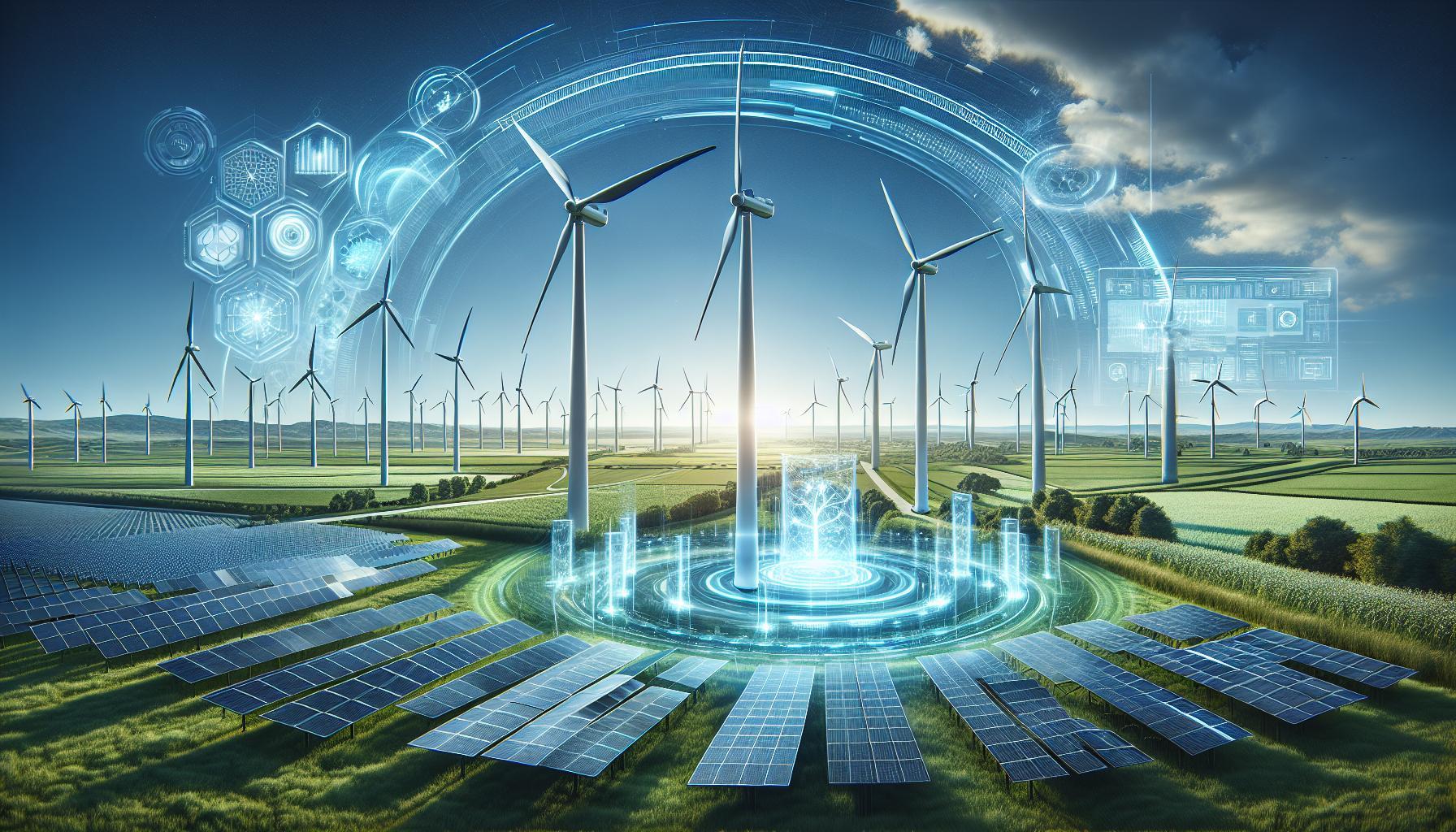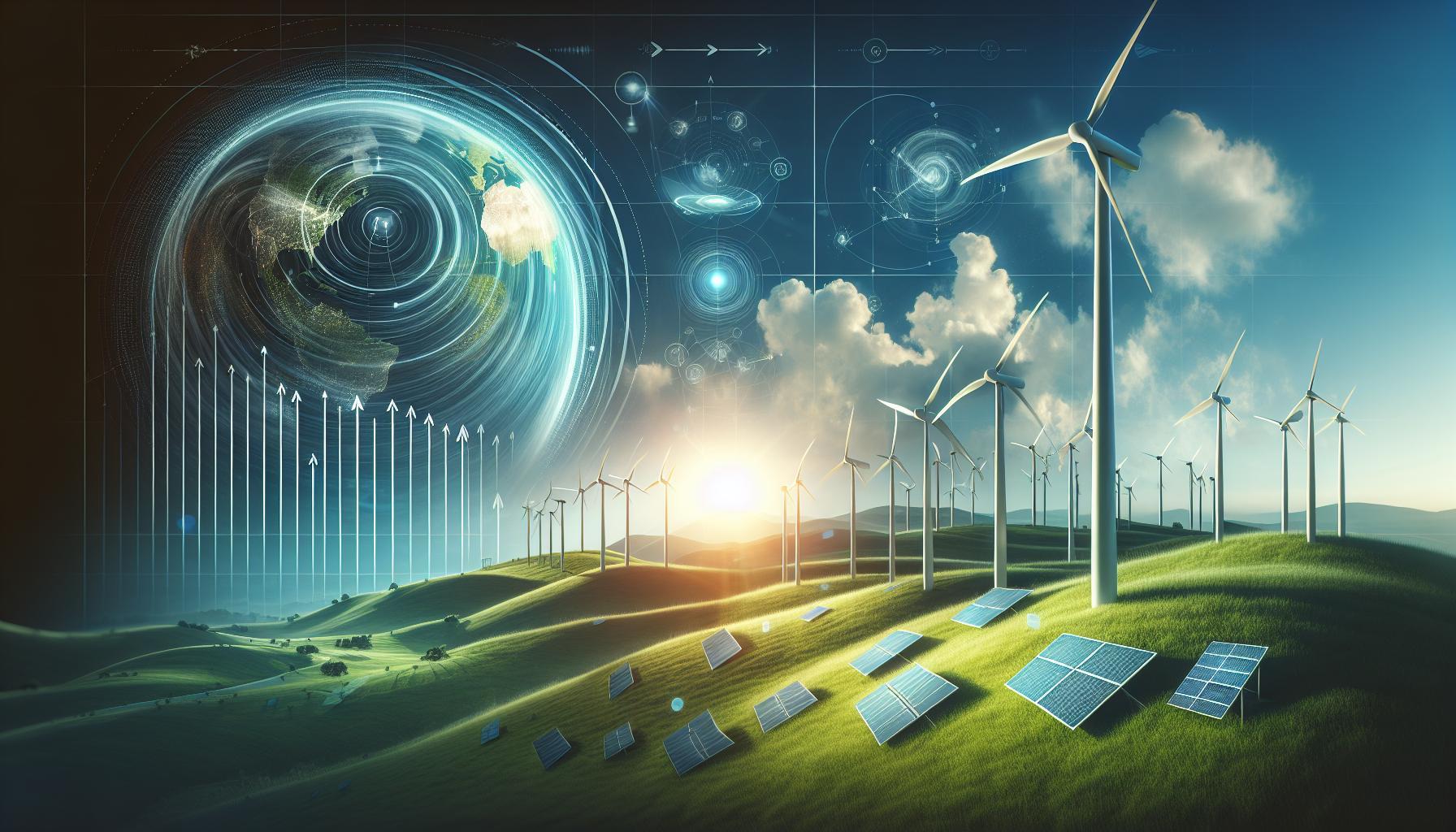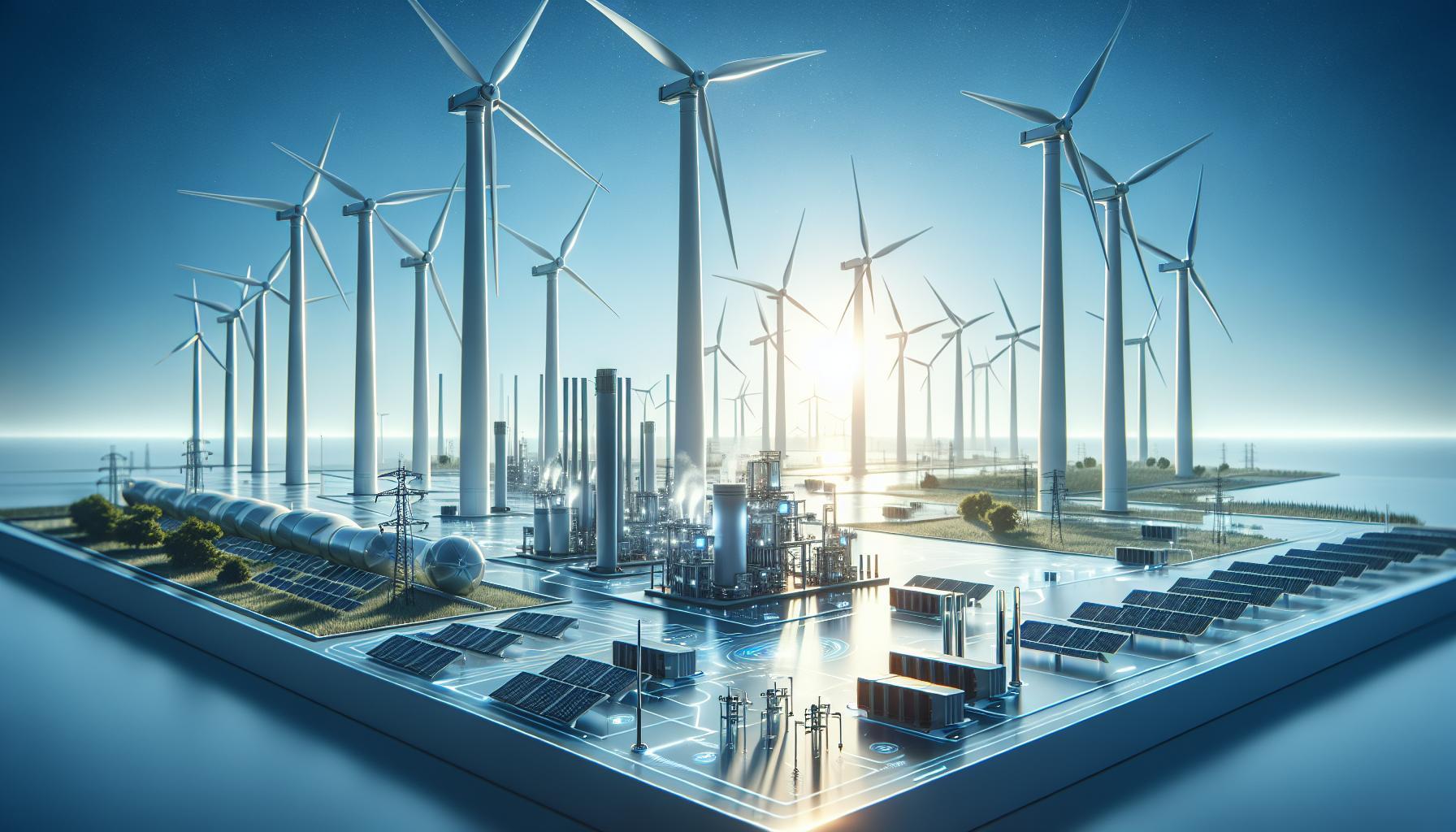Wind energy has been harnessed for centuries, evolving from ancient windmills to today’s sophisticated wind turbines, showcasing its pivotal role in the quest for sustainable power. As global concern over climate change and reliance on fossil fuels grows, understanding the history of wind energy becomes crucial for grasping its potential as a clean, renewable resource.
Over the past century, innovations and policy support have driven wind energy from a niche technology to a mainstream source of electricity. This journey not only reflects technological advancements but also highlights the increasing importance of renewable energy in everyday life. By uncovering the evolution of wind energy, we can appreciate its contributions to a more sustainable future and empower communities to embrace greener energy solutions.
As you explore this fascinating history, consider how wind energy can meet modern energy demands and what it means for our planet’s future. Join us on this enlightening journey through time to discover the milestones that have shaped wind energy as we know it today.
The Technological Advances in Wind Power
The development of wind power technology has undergone remarkable transformations since its inception, making it one of the fastest-growing sources of renewable energy in the world. Innovations in turbine design and materials science have enabled modern wind energy systems to harness the wind more efficiently than ever before. For instance, the size of turbines has significantly increased, with some of the latest models reaching over 200 meters in height. This growth allows for greater energy capture due to access to stronger and more consistent winds at higher altitudes.
Another significant advancement lies in the design of wind turbine blades. Modern blades are crafted from composite materials, reducing weight while maintaining strength and flexibility. This improvement not only enhances performance but also allows turbines to operate in lower wind speeds, broadening the range of suitable locations for wind farms. Additionally, innovations in aerodynamics have led to the development of blades designed specifically to minimize noise and improve efficiency, often incorporating specialized shapes that can optimize lift and reduce drag.
Moreover, the integration of digital technology in wind power systems has revolutionized both efficiency and maintenance. Smart wind turbines equipped with sensors monitor conditions in real time, allowing operators to predict performance issues before they occur. This predictive maintenance reduces downtime and repair costs, further enhancing energy output and economic viability. The deployment of machine learning algorithms also enables more accurate forecasting of energy production, helping to better integrate wind energy into the broader energy grid alongside other renewable sources.
As we look towards the future, continued advancements in wind power technology promise even greater efficiencies and lower costs. With ongoing research and investments in next-generation turbines and offshore wind projects, the potential for wind energy to contribute substantially to global energy needs is immense. The evolution of technology not only underscores the feasibility of wind energy as a reliable power source but also highlights a pathway towards a more sustainable energy landscape.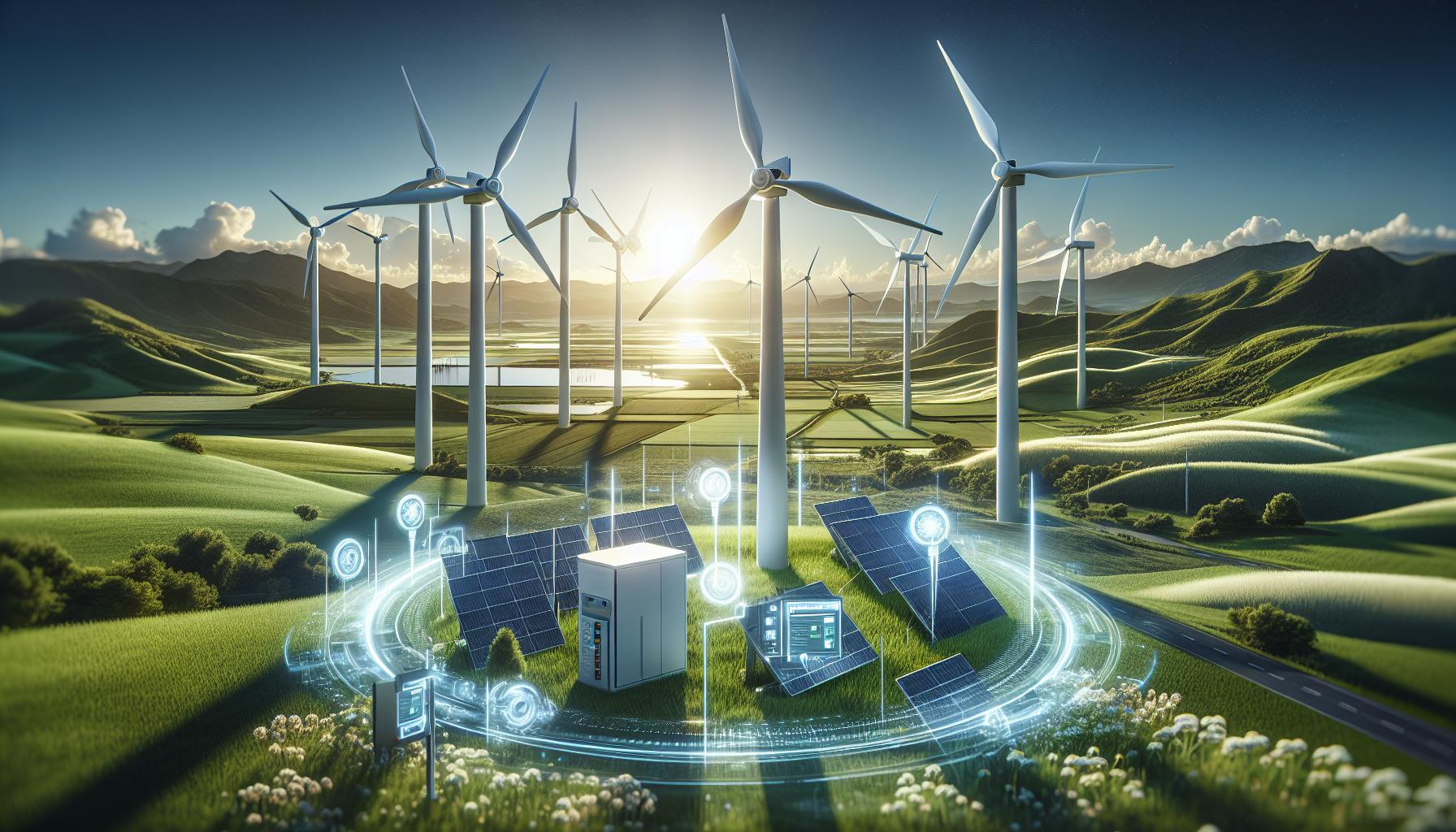
Understanding Different Types of Wind Turbines
The wind turbine, an ingenious invention, transforms the kinetic energy of wind into electrical energy, playing a pivotal role in the renewable energy landscape. As diverse as the ecosystems in which they are deployed, wind turbines come in two principal designs: horizontal-axis wind turbines (HAWTs) and vertical-axis wind turbines (VAWTs). HAWTs dominate the market, favored for their efficiency and performance, particularly in large wind farms. Their design resembles a traditional propeller, with blades that rotate around a horizontal axis, capturing wind most effectively when aligned directly with the wind flow.
In contrast, VAWTs have blades that rotate around a vertical axis, allowing them to capture wind from any direction without needing to be repositioned. This feature makes them particularly advantageous in urban settings where wind patterns can be erratic. Additionally, newer designs, such as the Darrieus and Savonius models, demonstrate the versatility of VAWTs. The Darrieus, with its curved blades, is known for efficiency at higher wind speeds, while the Savonius, with scooped blades, excels in low wind conditions but is less efficient overall.
A practical consideration when choosing turbine types is their structural integrity and maintenance requirements, which can differ considerably. For instance, the simpler engineering of VAWTs often results in lower maintenance needs due to fewer moving parts, making them attractive for locations where access for maintenance could be a challenge. On the other hand, HAWTs, while requiring more maintenance, can offer greater scalability and energy production for larger wind installations.
This evolving landscape of wind turbine technology continues to inspire advancements aimed at maximizing energy capture while minimizing environmental footprints. As we move towards a cleaner future, understanding these different types of wind turbines not only enhances our knowledge of how we can harness wind energy but also illustrates the innovative spirit driving the clean energy revolution.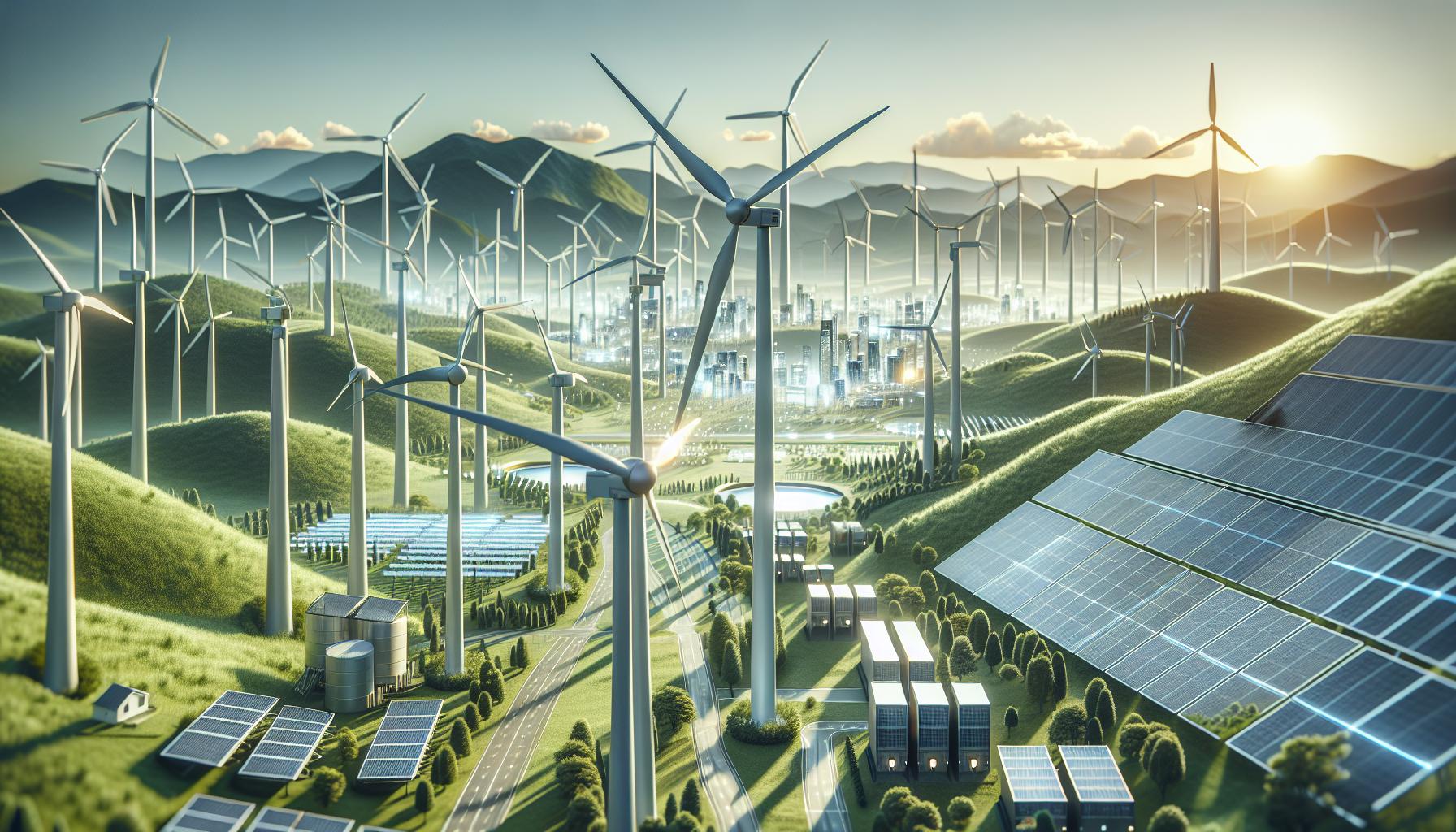
The Role of Wind Energy in the Energy Transition
The integration of wind energy into the global energy landscape has emerged as a critical component in our efforts to combat climate change and transition towards sustainable energy sources. With wind power being one of the fastest-growing renewable energy sources, its role in reducing greenhouse gas emissions and fostering energy independence is increasingly recognized. In 2020 alone, wind energy contributed to approximately 7% of total electricity generation in the U.S., showcasing its growing significance in the national energy mix.
As countries strive to meet ambitious climate targets, wind energy offers a scalable solution that can be deployed rapidly. The ability of modern wind turbines to generate electricity efficiently makes wind power a viable alternative to fossil fuels. For instance, the expansion of offshore wind farms has unlocked vast potential along coastlines, where wind conditions are often more favorable. Countries like Denmark and the United Kingdom have led the charge, investing heavily in offshore wind capacity, which not only enhances energy security but also stimulates job creation within the green sector.
Moreover, the technological advancements in wind turbine design and efficiency have drastically reduced the cost of wind energy over the past decade. This trend has made wind power not only competitive with traditional energy sources but has also attracted significant investments in emerging markets. Incentive policies such as feed-in tariffs and renewable portfolio standards support this growth by guaranteeing a fixed payment for electricity generated from renewable sources, thereby encouraging further investment and technological innovations.
In adapting to an energy landscape increasingly characterized by climate risks, wind energy stands out as a beacon of hope. Its low operating costs and minimal environmental footprint underscore its potential to play a key role in achieving a sustainable energy future. As communities and businesses recognize the financial and ecological benefits of wind energy, its adoption is set to accelerate, aligning economic growth with the urgent need for a cleaner, more resilient energy system. This synergy between technology, policy, and social acceptance positions wind energy as an essential pillar of the ongoing energy transition.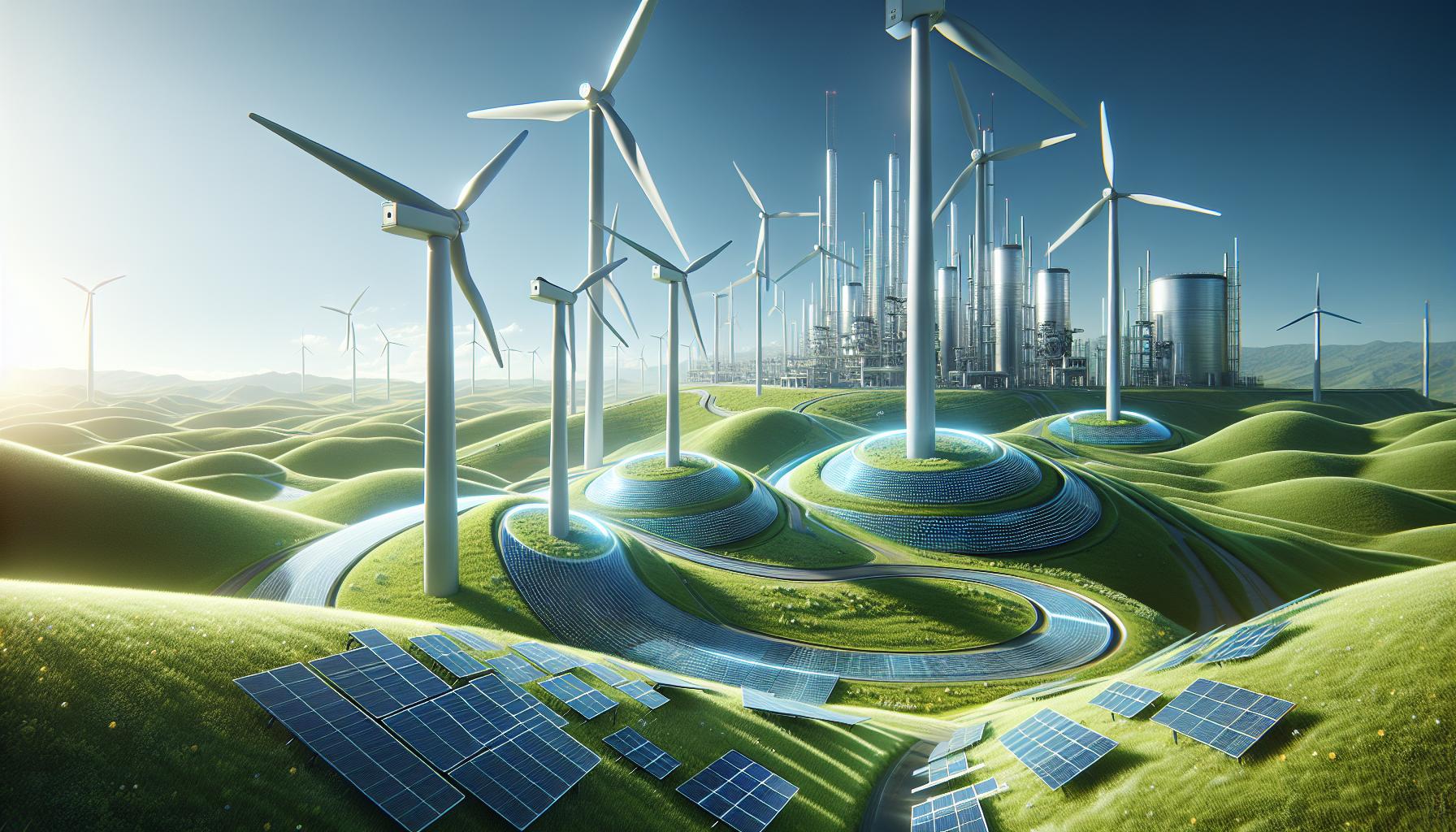
Global Adoption of Wind Energy: Key Players and Trends
The global landscape of wind energy has evolved dramatically over the past few decades, transforming from a niche renewable resource into a mainstream energy solution that is increasingly recognized for its potential to combat climate change. Countries across various continents are making significant strides in adopting wind energy technologies, with notable investments flowing into both onshore and offshore wind projects. This surge in adoption is driven by several key players, including leading companies like Siemens Gamesa, GE Vernova, and Vestas, among others, who are pushing the envelope of innovation in turbine technology, efficiency, and deployment strategies.
In the coastal regions, offshore wind farms have emerged as a game-changer in the energy sector. The favorable wind conditions found in these areas allow for the placement of larger turbines that can capture significantly more energy than their onshore counterparts. Countries like Denmark and the United Kingdom are champions in this field, with ambitious projects that include massive wind farms capable of generating thousands of megawatts of electricity. This trend is echoed in emerging markets such as China and Brazil, where investment in wind energy infrastructure is critical to meet rising energy demands and aggressive climate targets.
Key Trends Influencing Adoption
Several trends are shaping the expansion of wind energy globally. First, technological advancements are playing a pivotal role. Innovations such as larger turbine designs and enhanced blade aerodynamics have led to greater efficiency and lower costs of energy production. According to a report from the Lawrence Berkeley National Laboratory, the adoption of larger onshore wind turbines is expected to unlock significant capacity and production gains, which will minimize land use and maximize energy output [[2]].
Additionally, supportive government policies are instrumental in driving wind energy adoption. Incentives like tax credits, feed-in tariffs, and renewable energy portfolio standards create a favorable environment for investments in wind technologies. These policies not only encourage initial investment but also foster long-term growth by ensuring a stable revenue stream for energy producers. For instance, in North America, the wind energy market is projected to grow substantially, with estimates indicating an increase of over $52 billion by 2034, driven by innovative technologies and supportive regulations [[1]].
As societal awareness of climate issues grows, public perception of wind energy is also improving. Communities are increasingly recognizing the benefits of clean energy solutions, such as job creation, energy independence, and reduced environmental impacts. This shift presents opportunities for local stakeholders to participate in the transition to renewable energy through community wind projects and cooperative investments, further accelerating adoption.
In conclusion, the upward trajectory of wind energy adoption is characterized by a collaborative approach among key players, technological advancements, and favorable policy frameworks. These elements are essential in positioning wind energy as a cornerstone for sustainable energy systems globally, aligning economic interests with the urgent need for cleaner, renewable energy sources. As the transition continues, the collective efforts of governments, industries, and communities will be pivotal in realizing the full potential of wind energy as a vital contributor to our energy future.
Case Studies: Successful Wind Energy Projects
Wind energy has transformed significantly over the decades, and several successful projects serve as powerful testimonials to its potential. One of the most notable examples is Hornsea One, located off the coast of Yorkshire, United Kingdom. This offshore wind farm, which became operational in 2020, holds the record for the world’s largest offshore wind farm, with 1.2 gigawatts (GW) of installed capacity. It can power over a million homes and showcases the capabilities of modern turbine technology, with some turbines reaching heights of 190 meters. Such large-scale projects illustrate the viability of wind energy as a substantial contributor to the grid, enabling countries to significantly reduce their carbon footprints.
Another compelling case is the Gansu Wind Farm in China, which represents one of the largest onshore wind power installations globally. With a planned capacity of over 20 GW, the project has already produced substantial electricity, showcasing China’s commitment to renewable energy. This project highlights various elements essential for successful wind energy deployment, such as governmental support, infrastructure investment, and innovative engineering. The Gansu Wind Farm not only helps meet China’s rising energy demands but also acts as a critical pillar in the nation’s strategy to increase the proportion of renewables in its energy mix.
In the United States, the Alta Wind Energy Center in California is a prime example of successful wind energy implementation. With a capacity of 1.5 GW, it is one of the largest in the country and is a combination of various phases of development. This facility underscores accuracy in project planning and execution, showcasing how diversifying the types of turbines deployed can enhance efficiency and energy output. Moreover, it plays a crucial role in California’s aim to achieve 50% renewable energy by 2030.
These projects reveal not just the technical feasibility of wind energy but also underscore the importance of supportive policies, innovative technologies, and community engagement in transitioning toward a sustainable energy future. They collectively represent a shift towards cleaner energy solutions, inspiring other nations to accelerate their wind energy initiatives. By learning from these case studies, stakeholders can replicate successes and adapt strategies to optimize their local wind energy projects, ensuring a more sustainable energy landscape.
Government Policies Supporting Wind Energy Growth
Significant policy frameworks have played a pivotal role in the growth of wind energy, shaping the landscape for investments and development in this renewable sector. Various governments worldwide have implemented strategies that not only incentivize the establishment of wind energy projects but also foster an environment conducive to innovation and collaboration. As the fossil fuel industry faces increasing regulatory pressures and public scrutiny, the proactive policies supporting wind energy provide a clear pathway toward sustainable energy solutions.
One of the cornerstones of government support for wind energy is the introduction of financial incentives such as tax credits, grants, and subsidies. In the United States, programs like the Production Tax Credit (PTC) and Investment Tax Credit (ITC) have significantly reduced the financial barriers to entry for wind project developers. For example, the PTC allows developers to receive a tax credit based on the electricity produced, making wind energy projects economically viable. This has resulted in a surge of wind installations, bolstering the industry’s contribution to the national energy mix.
Additionally, federal and state governments are increasingly engaging in partnerships with private entities to foster research and innovation within the wind energy sector. The U.S. Department of Energy (DOE) recognizes the importance of collaboration, as seen in its Wind Energy Technologies Office, which supports early-stage research that enhances technology affordability and reliability. Such partnerships not only facilitate technological advancements but also help prepare the workforce needed for an evolving energy sector.
The regulatory landscape also plays a crucial role in supporting wind energy growth. Policies surrounding land use, permitting processes, and environmental regulations can either facilitate or hinder wind farm development. Streamlining permitting processes and providing clear guidelines can lead to faster project implementation, while robust environmental assessments ensure that wind energy projects align with conservation goals. Countries like Denmark and Germany have set exemplary standards in creating a regulatory framework that balances development with ecological considerations, showcasing how thoughtful policies can drive successful wind energy deployments.
In summary, effective government policies are fundamental in supporting wind energy growth. These strategies, through financial incentives, collaborative efforts, and clear regulatory guidelines, pave the way for the continued expansion of this clean power source. As governments continue to prioritize renewable energy, the policies they craft will significantly influence the trajectory of wind energy development in the years to come.
Public Perception and Acceptance of Wind Power
Public acceptance of wind power is critical for the successful deployment and expansion of wind energy projects globally. Despite the long history of wind energy utilization, public perception can vary widely, often influenced by local values, economic considerations, environmental concerns, and the visibility of wind farms in the landscape. Research indicates that regions with a greater understanding of the benefits of wind energy tend to showcase higher acceptance levels, leading to enhanced project development and community support.
In the United States, public sentiment towards wind energy is generally favorable, with numerous polls reflecting strong support for renewable sources. For example, many recognize wind energy as a clean and sustainable alternative to fossil fuels, contributing to reduced greenhouse gas emissions and fostering job creation in local communities. Yet, acceptance is not uniform; it can be hindered by factors such as noise pollution from turbines, aesthetic concerns regarding the landscape, and fears related to impacts on wildlife. Successful projects often engage in thorough community outreach, addressing these concerns directly and providing insights into the economic and environmental benefits that wind energy can deliver.
Driving Factors of Acceptance
Various factors play a significant role in shaping public perception of wind energy:
- Awareness and Education: Increased understanding of wind energy’s benefits can mitigate misconceptions and foster support. Programs that inform residents about how wind energy operates, its reliability, and its ecological benefits have proven effective.
- Community Involvement: Projects that involve local communities in planning and decision-making processes tend to experience higher acceptance rates. When residents see direct benefits-such as financial incentives or local job opportunities-they are more likely to support wind initiatives.
- Trust in Developers: The credibility of project developers also impacts public perceptions. Transparent communication and demonstrated commitment to environmental and social responsibilities are crucial in building trust.
Additionally, case studies from countries like Germany and Denmark illustrate how positive public perceptions have expedited wind projects. These nations have implemented policies that not only provide financial incentives but also encourage public participation in renewable energy planning, ultimately smoothing the transition to a cleaner energy future.
The path forward for wind energy development lies in overcoming barriers to acceptance by cultivating informed communities, ensuring transparency, and highlighting the tangible benefits of wind power. As society moves towards more sustainable energy sources, fostering a positive perception of wind energy will be essential for realizing its full potential as a cornerstone of the global energy transition.
Wind Energy vs. Other Renewable Sources: A Comparative Analysis
Wind energy stands out as one of the most promising forms of renewable energy, but how does it compare to other alternatives like solar, hydro, and geothermal? Each renewable source has its unique benefits and constraints, which influence their adoption rates and overall effectiveness in addressing global energy needs.
Wind energy harnesses the kinetic energy of wind through turbines, transforming it into electricity. One of its key advantages is its efficiency; modern wind turbines can convert wind energy into electricity with an efficiency rate of around 45% to 50%. In contrast, solar energy, while abundant and versatile, typically sees lower efficiency rates, averaging around 15% to 20% for solar panels under optimal conditions. However, solar’s scalability-from household rooftop installations to large solar farms-makes it an attractive option for decentralized energy generation.
When comparing environmental impacts, both wind and solar power emit no direct greenhouse gases during operation. Yet, the life-cycle impacts of each need consideration. Wind farms can impact local wildlife, particularly birds and bats, whereas solar farms occupy land that could potentially disrupt local ecosystems. Hydropower, known for its capacity to generate large amounts of electricity while providing consistent base load energy, may result in significant ecological alterations due to damming rivers. Meanwhile, geothermal energy, drawing from Earth’s internal heat, offers a low carbon footprint but is geographically limited to areas with suitable geothermal reservoirs.
In terms of reliability and consistency, wind and solar energy can vary based on geographic and climatic conditions. Wind resources can be intermittent, leading to challenges in energy storage and grid integration, similar to solar. However, advancements in battery storage technology and grid management systems are helping to mitigate these issues, enabling a more balanced energy supply across fluctuating demands. Geothermal energy, on the other hand, offers stable output but requires significant upfront investment and infrastructure development, which can inhibit broad adoption.
In considering the future landscape of renewable energy, collaboration among various sources will be essential. Wind and solar energy, for example, can complement each other: during sunny days when solar generation peaks, wind might be less abundant and vice versa. This complementary nature could lead to a more resilient and sustainable energy grid, ultimately fostering a cleaner environment and aiding in the transition away from fossil fuels. As each renewable source continues to evolve, understanding their distinct characteristics will guide policy-making and investment decisions, paving the way for a diversified and robust renewable energy future.
Q&A
Q: What is the history of wind energy?
A: The history of wind energy dates back to ancient civilizations, where wind was harnessed for sailing and milling grain. The modern era began in the 19th century with wind turbines for electricity generation, evolving significantly through technological advancements, leading to today’s sophisticated wind farms, significantly contributing to clean power.
Q: How has wind energy evolved over the years?
A: Wind energy has evolved from simple windmills for mechanical tasks to high-capacity wind turbines generating electricity. Technological innovations have increased efficiency and scalability, making wind a major source of renewable energy, driven by environmental concerns and the need for sustainable power solutions.
Q: What are some key milestones in the development of wind energy technology?
A: Key milestones include the introduction of the first electricity-generating wind turbine in 1888 and the rise of modern wind farms in the 1980s. Recent advancements include larger turbine sizes and improved materials, enhancing energy production and lowering costs, thereby fostering wider adoption of wind energy.
Q: Why is wind energy considered a clean power source?
A: Wind energy is deemed clean because it produces electricity without emitting greenhouse gases or air pollutants. It harnesses the natural movement of air, reducing reliance on fossil fuels while contributing to a sustainable energy future and combating climate change.
Q: What are the benefits of using wind energy today?
A: The benefits of wind energy include reduced carbon emissions, lower operating costs compared to fossil fuels, and job creation in the green technology sector. Additionally, wind energy enhances energy security and promotes sustainability, aligning with global efforts to combat climate change.
Q: Where are the leading countries in wind energy production?
A: Leading countries in wind energy production include China, the United States, and Germany. These nations have made significant investments in wind farms and technology, generating a substantial portion of their electricity from wind, showcasing wind energy’s potential on a global scale.
Q: What challenges does the wind energy industry face?
A: The wind energy industry faces challenges such as intermittency in power generation, visual and noise impacts on communities, and the need for substantial upfront investment. Addressing these issues through innovation and policy support is crucial for the industry’s continued growth and sustainability.
Q: How can individuals support wind energy initiatives?
A: Individuals can support wind energy by advocating for clean energy policies, choosing green energy suppliers that provide wind power, and educating others about the benefits of renewable energy. Additionally, investing in or supporting local wind energy projects can have a positive impact on the community.
For further details on the fascinating evolution of wind energy, visit our comprehensive article on the history of wind energy and its impact on sustainable power solutions.
Concluding Remarks
As we’ve explored the rich history of wind energy and its evolution into a pivotal clean power source, we hope you feel inspired by its potential to shape a sustainable future. From ancient windmills to modern turbines, the transformation highlights innovation in renewable energy. Don’t let this knowledge stop here-take action today! Dive deeper into related topics like solar energy advancements and the benefits of renewable resources to arm yourself with comprehensive insights.
If you’re curious about how wind energy could work for your home or business, consider signing up for our newsletter for the latest updates and expert advice. Engage with us and share your thoughts in the comments below. Your perspective matters! And remember, every small step towards renewable energy makes a difference-let’s keep the momentum going together as we lead toward a cleaner, greener world. Explore more of our content on sustainable practices today!

